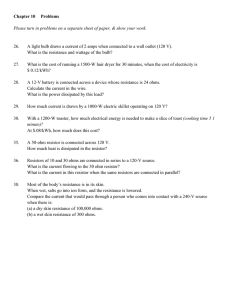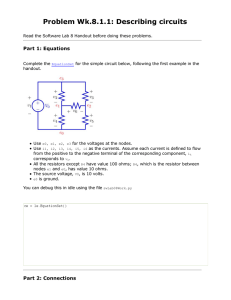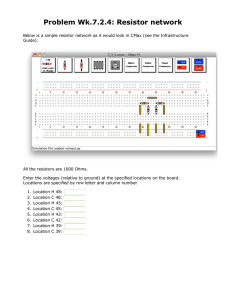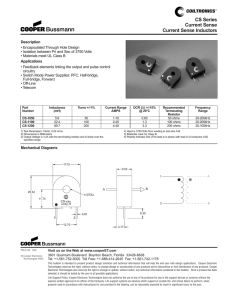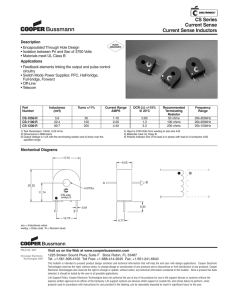Solutions 20.37-20.51 - Department of Physics
advertisement
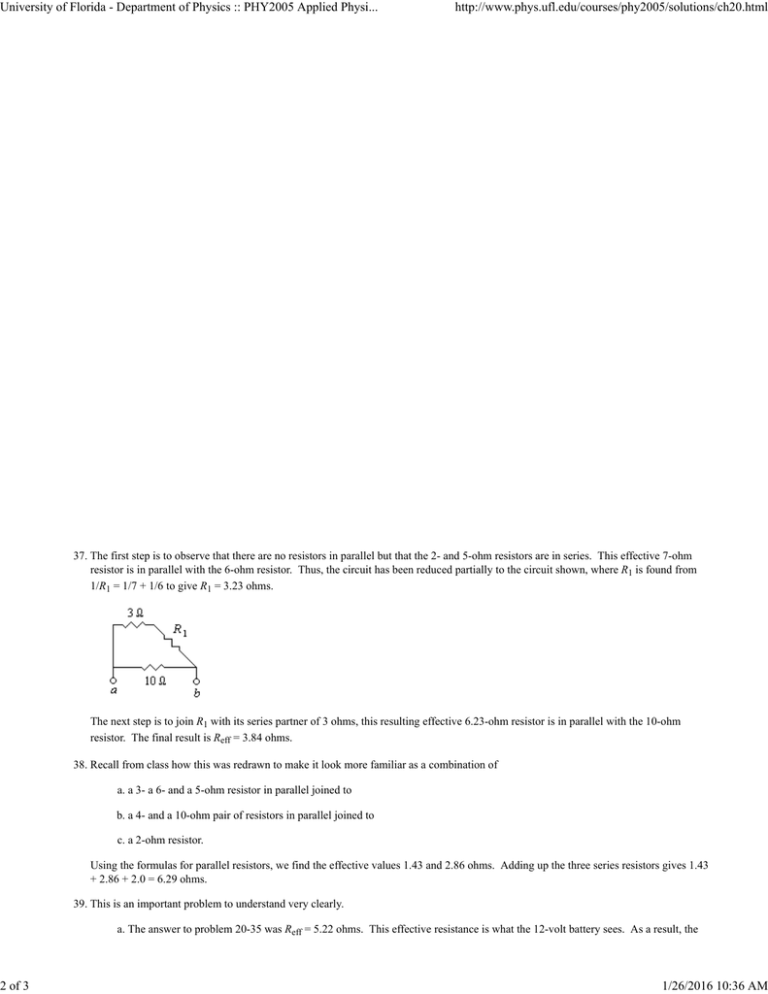
University of Florida - Department of Physics :: PHY2005 Applied Physi... 2 of 3 http://www.phys.ufl.edu/courses/phy2005/solutions/ch20.html 37. The first step is to observe that there are no resistors in parallel but that the 2- and 5-ohm resistors are in series. This effective 7-ohm resistor is in parallel with the 6-ohm resistor. Thus, the circuit has been reduced partially to the circuit shown, where R1 is found from 1/R1 = 1/7 + 1/6 to give R1 = 3.23 ohms. The next step is to join R1 with its series partner of 3 ohms, this resulting effective 6.23-ohm resistor is in parallel with the 10-ohm resistor. The final result is Reff = 3.84 ohms. 38. Recall from class how this was redrawn to make it look more familiar as a combination of a. a 3- a 6- and a 5-ohm resistor in parallel joined to b. a 4- and a 10-ohm pair of resistors in parallel joined to c. a 2-ohm resistor. Using the formulas for parallel resistors, we find the effective values 1.43 and 2.86 ohms. Adding up the three series resistors gives 1.43 + 2.86 + 2.0 = 6.29 ohms. 39. This is an important problem to understand very clearly. a. The answer to problem 20-35 was Reff = 5.22 ohms. This effective resistance is what the 12-volt battery sees. As a result, the 1/26/2016 10:36 AM University of Florida - Department of Physics :: PHY2005 Applied Physi... 3 of 3 http://www.phys.ufl.edu/courses/phy2005/solutions/ch20.html current through the battery is I = (12 V)/(5.22 ohms) = 2.30 A. b. This current of 2.30 A goes through the 3-ohm resistor, then splits up with part of it going through the 4-ohm resistor and the rest going through the 5-ohm resistor. Here is where the misunderstandings begin. The battery provides a voltage rise of 12 V. But the voltage drop across the 3-ohm resistor must be V = IR = (2.30 A)(3 ohms) = 6.9 V. Now remember that the sum of voltages around any circuit loop must be zero. Therefore, the voltage drop across the 4-ohm resistor must be 12 – 6.9 = 5.1 volts. This information then tells us what we nee to find the current through the 4-ohm resistor. The answer is I = V/R = (5.1 V)/(4 ohms) = 1.28 A. 43. Unfortunately, this problem is worded differently in different printings of the book. My book says “How much power is lost in a resistor when a 3.0-V battery sends a current of 0.30 A through it?” The problem is a very simple one. The power is given by P = IV. P = (0.30 A)(3.0 V) = 0.90 watts. 47. a. At 220 volts, the power expended is (220 V)(7.5 A) = 1650 watts b. t 120 volts the same power as before requires a current of I = P/V = (1650 W)/(120 V) = 13.8 A. Because high current causes excessive heating in house wires, appliances that need large power are usually operated at 220 volts so that current does not need to be as high. 51. The equation relating resistance to resistivity is R = (rho)(L)/A. For #10 Nichrome wire having a diameter d = 2.59 x 10-3 m (radius is 1.295 x 10-3 m) and a resistance of R/L = 0.213 ohms/m, The resistivity is rho = (R/L)(Area) = (0.213 ohms/m)(3.14)(1.295 x 10-3 m)2 = 1.12 x 10-6 ohm.m. 1/26/2016 10:36 AM

